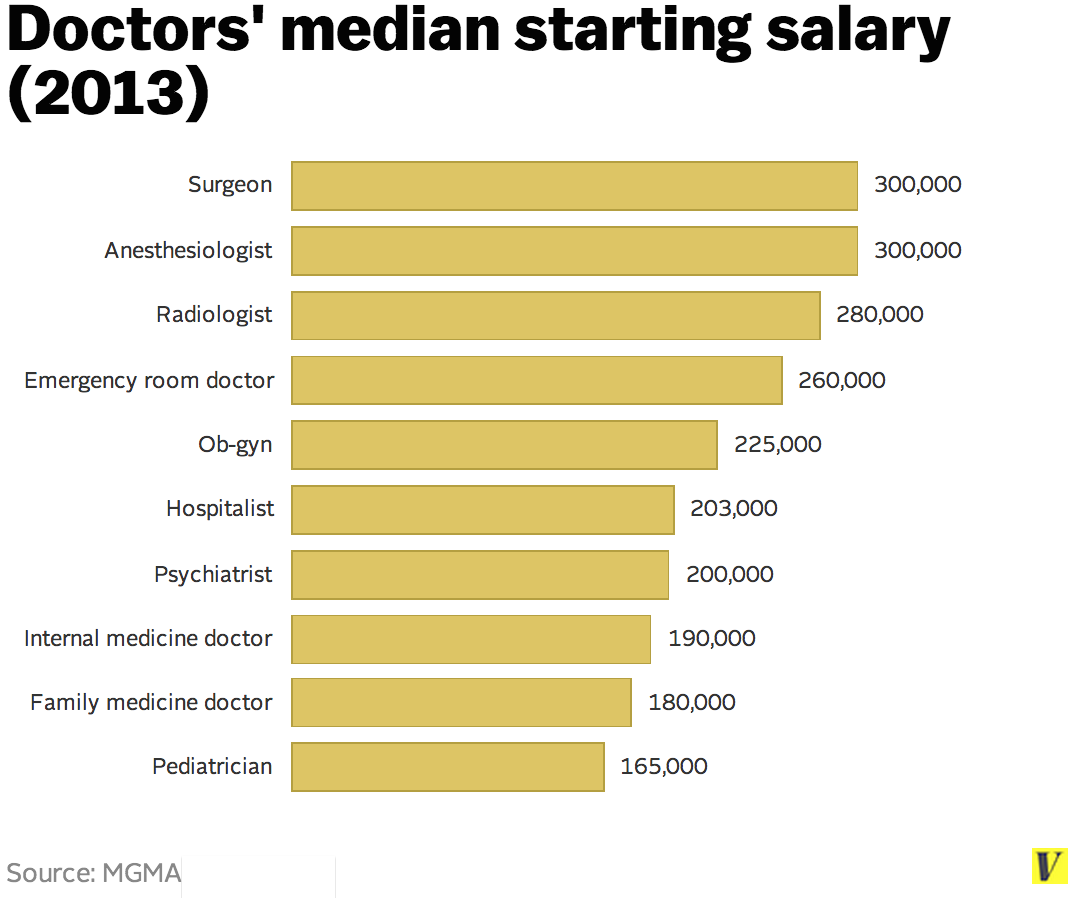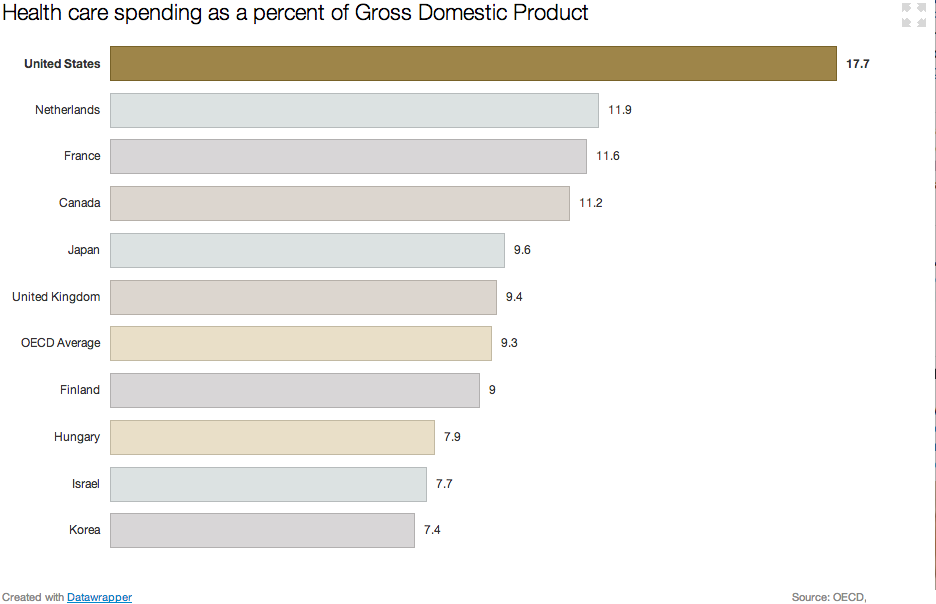Source: Vox

The median salary for anesthesiologists who started jobs last year was $300,000 — about twice as much as the pediatrician who just started off.
The new survey of doctors’ median first-year pay after residency, published Wednesday by the Medical Group Management Association, shows huge variation in what doctors earn during their first year in practice. Speciality doctors’ salaries vastly outpace primary care physicians, with surgeons and anesthesiologists coming out on top.

Primary care doctors in the United States, do tend to earn a lot more than their counterparts abroad. One 2011 study, which looked at doctor salaries from 2008, found that the average primary care doctor in France earns about $95,000, compared to the $186,000 that physicians net in the United States.

Doctor salaries are a pretty significant part of the reason why the United States spends more per person on health care than any other developed country. About 56 percent of all medical spending goes to paying health care workers, rather than buying prescriptions, for example, or medical equipment.
And health care wages seem pretty resistant to economic downturns. Research in the New England Journal of Medicine found that health care wages increased by 3.4 percent annually during the recession, while wages fell in other sectors.
Correction: An initial version of this post mis-stated the amount of health care spending that goes towards doctor salaries. Fifty-six percent of health spending goes towards the salaries of all health care workers, not just doctors.
How does American health-care spending compare to other countries?
The United States has higher per-person health-care spending than all other industrialized nations. The most recent international data from the OECD estimates that the United States puts 17.7 percent of its economy towards health care (slightly higher than CMS’s estimate of 17.2 percent). The OECD average is 9.3 percent.

Much of the difference between health care spending abroad and in the United States has to do with prices. Americans don’t actually go to the doctor a lot more than people in other countries. But when we do, our medical care costs more. Specific services, like MRIs and knee replacements, have significantly higher price tags when delivered in the United States than elsewhere.

RT @MedClerkships: What doctors earn when they graduate, in one chart: Source: Vox http://t.co/UtiqorYbHf